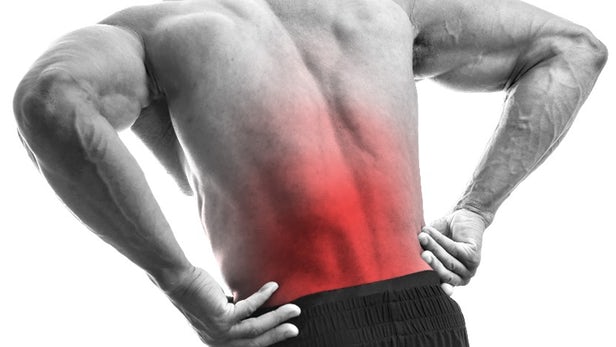
Low Back Pain
How Common is Low Back Pain?
According to an Australian Bureau of Statistics National Health Survey conducted in 2014–15. Around 3.7 million Australians have back problems – that is 16% of the population! It is estimated that between 70 and 90% of people will experience low back pain at some point in their lives so don’t worry, you’re not alone.
What is the Most Common Cause of Low Back Pain?
Muscular Spasm!
Any excess strain that is placed on the lower back can result in muscle spasm. In most cases, muscle spasm will resolve itself naturally within a couple of weeks however if this occurs frequently or is severely painful it is recommended that you seek medical attention to try to find and address the root cause or causes of your low back pain. Muscular spasm can occur from something as simple as sleeping in a bad position, but it also often caused by lifting weight in a compromising position. Twisting while holding weight is a common culprit and that weight is often a young child but could also be something heavy you have lifted at home or at work. Remember to always lift slowly and carefully using mainly your knee joints rather than bending your back. If you are frequently experiencing low back pain, you may have some muscular weakness which is compromising your core. If that is the case, you may need a program from your Physiotherapist to strengthen these areas. Regardless of the cause, the good news is that remedial massage is excellent for assisting with muscle spasm. Just remember that if you are in severe pain, please wait until this has subsided somewhat before booking your massage treatment.
What are Some Other Causes Low Back Pain?
Low Back Pain has many possible causes. Some common direct causes are:
Strains
A strain is a tear in a muscle or tendon. There are four grades of strain from very mild all the way through to a total rupture. Most low back strains would be mild to moderate.
Disc Injury
The soft discs of the spine degenerate or rupture. This may then irritate nerves and cause mild to severe pain.
Sciatica
Sciatica is nerve pain radiating down the buttock and leg which is caused by impingement in the lower back. Most commonly the pain only radiates down one leg.
Spinal Stenosis
A narrowing of the spinal canal usually affecting the lower back or neck. Symptoms may include pain, numbness, bowel control, muscle weakness and impaired bladder function.
Arthritis
Inflammation of the joints which causes pain and stiffness. This is a degenerative condition which usually worsens with age but can be managed.
Fibromyalgia
Widespread pain and tenderness in the body including possible memory issues and fatigue. There is no known cure, but it can be managed to a degree with lifestyle.
Spondylitis
A form of inflammatory arthritis that is more common in men. It affects large joints including the lumbar vertebrae which can eventually fuse. It generally results in a hunched forward posture, pain and stiffness.
Spondylosis
Wear and tear of the spinal disc due to aging. Symptoms may not be present or could include muscle spasm and associated pain.
Some indirect causes of Low Back Pain are kidney and bladder problems, pregnancy, endometriosis, ovarian cysts, uterine fibroids, and cancer.
In order to find out what is causing your low back pain it is recommended you see a physiotherapist or GP. Once they have diagnosed the cause of your low back pain, remedial massage may be beneficial as part of your treatment or management plan.
How is Low Back Pain Diagnosed?
Initially, your GP or physiotherapist will ask you a series of questions about your pain such as the type of pain (i.e. sharp, dull, aching, radiating etc.) and then they will have you move your body with certain special tests to get a better idea of the causal factors. In some cases, they will refer you on to have some scans such as an MRI or x-ray in order to get a clearer picture of what is occurring with your spine and any supporting connective tissues. If there are no obvious causes found by the physical examination and scans then a specialist doctor may need to take up your case, but this is unlikely.
What Should I do about my Low Back Pain?
Low back pain can be broken down into two broad categories, acute and chronic.
Acute Low Back Pain
If your low back pain is severe and came on suddenly then it is known as acute pain and the RICE protocol is often recommended:
- R - Rest: Stop your normal activities and minimise any movements that aggravates your pain
- I - Ice: Apply ice to the affected area for up to 72 hours.
- C - Compression: Wrap the area in an elastic medical bandage if possible
- E - Elevation: Raise the affected are above your heart. In the case of low back pain this may be difficult so laying on your side may be easier.
If the pain is easing off, then a remedial massage may be very beneficial. There is small body of low-quality scientific evidence that massage may be effective in providing immediate short-term pain relief for patients suffering acute back pain. If your symptoms are persisting or getting worse after 72 hours though you need to contact your GP for a diagnosis.
Chronic Low Back Pain
If you have been experiencing low back pain for a long time and have not been given a lasting solution by the medical system, you may be looking for solutions to ease your pain and that is when people often turn to solutions such as remedial massage to manage the symptoms however it’s important to note that massage therapy may be no more effective than control for long-term pain relief in people with chronic low back pain. If it works for you and helps you live the life you want to live, then continue treatment. If you are looking for a more permanent solution, then you would best be recommended to look elsewhere.
Review of the Australian Government Rebate on Natural Therapies for Private Health Insurance
In 2015, the then government funded a review of evidence for the effectiveness of various natural therapies to determine if customers should continue to receive a private health fund rebate for these services. From the 1st of April 2019, most natural therapies were removed from private health extras cover. One of the reasons that Remedial Massage was not removed is because of the evidence that was submitted to the review. The moderate quality evidence of the immediate, short-term relief of low back pain was pivotal in allowing customers to continue to claim rebates. Although, massage therapy was not removed the body and quality of the evidence submitted was very low and so more research is needed in future to fully understand the effects and effectiveness of massage therapy on many health conditions. Until then, it is a case of making up your own mind about what works for you.


